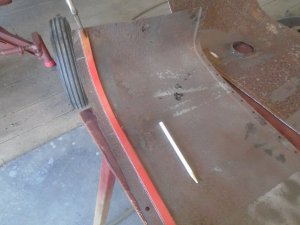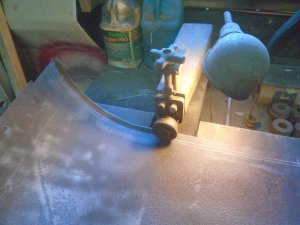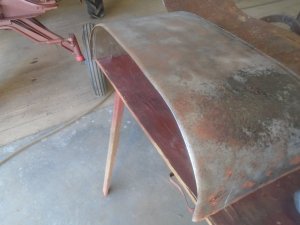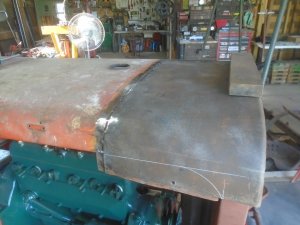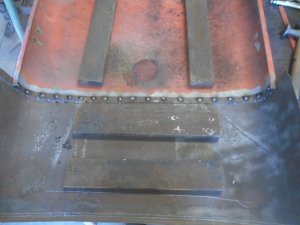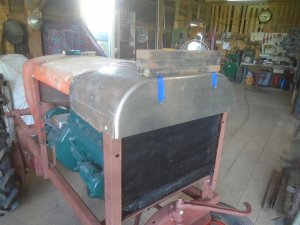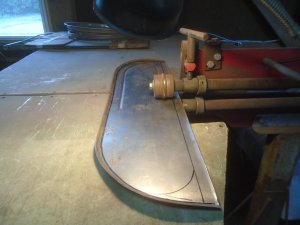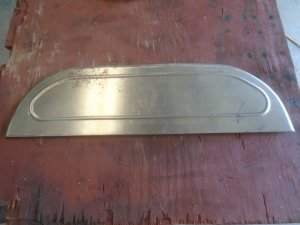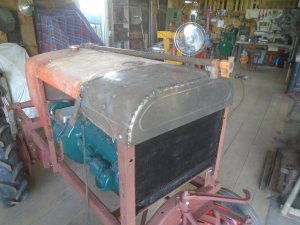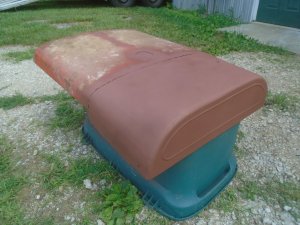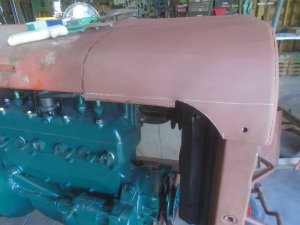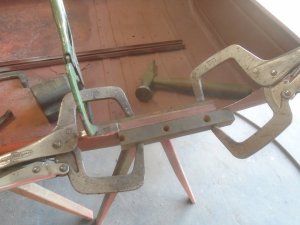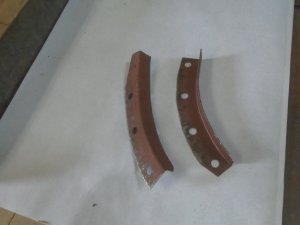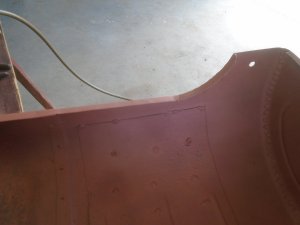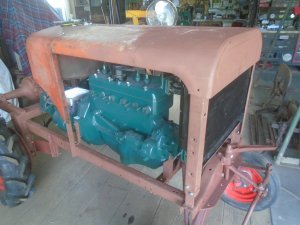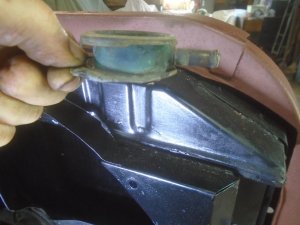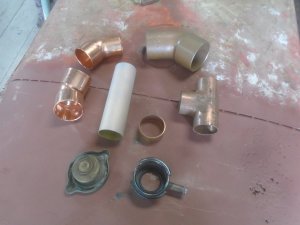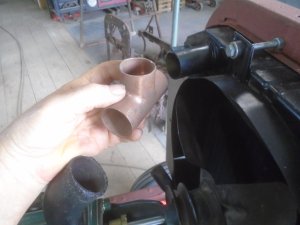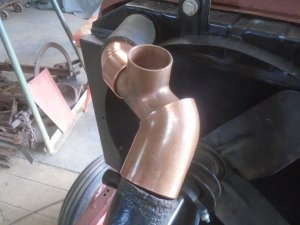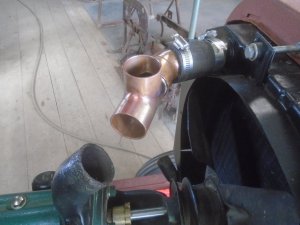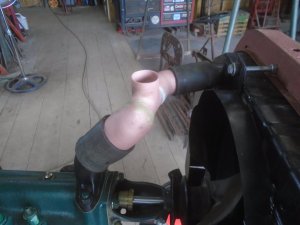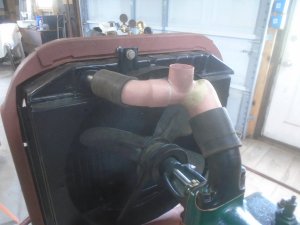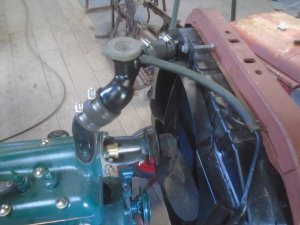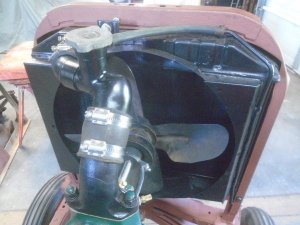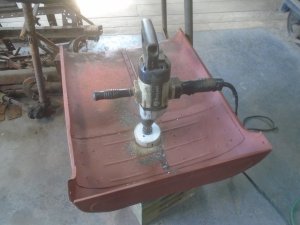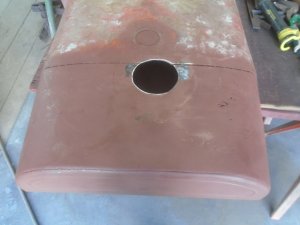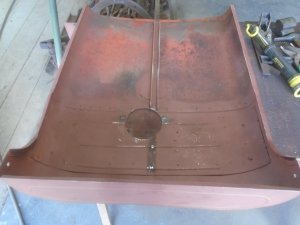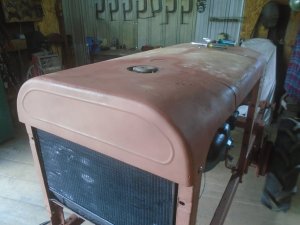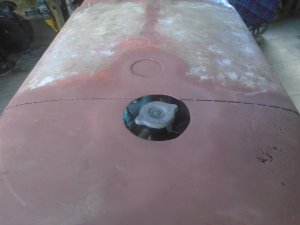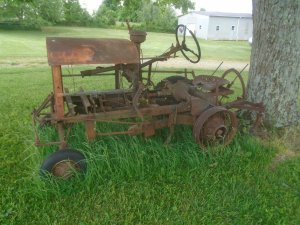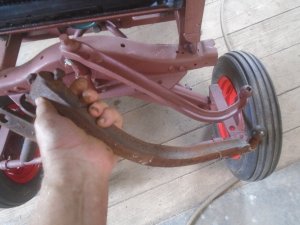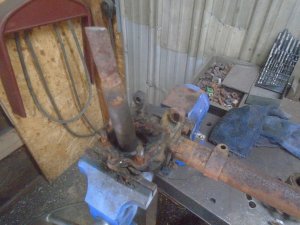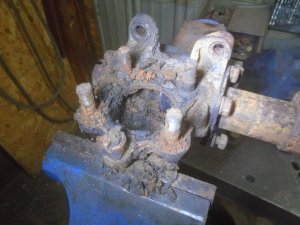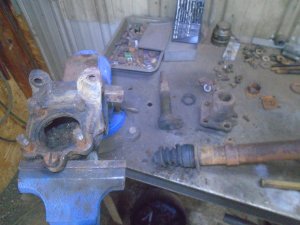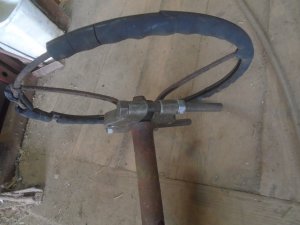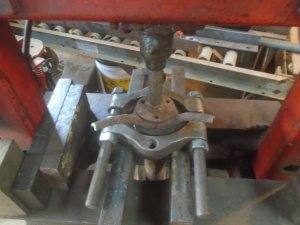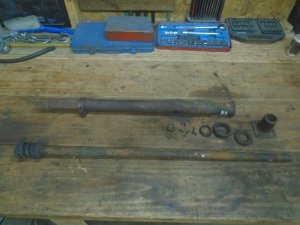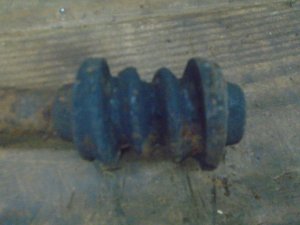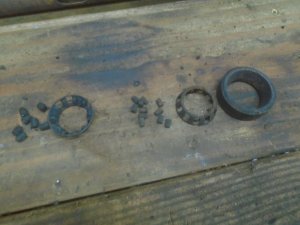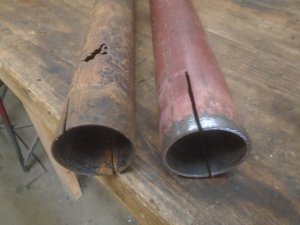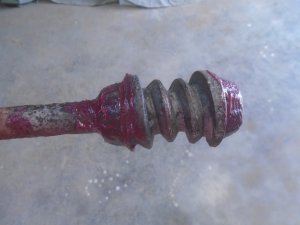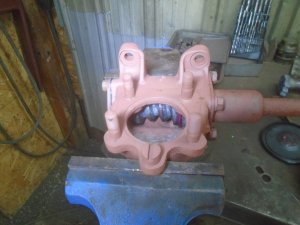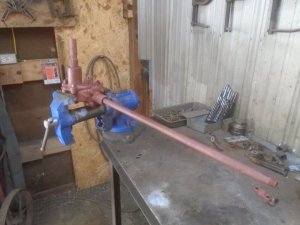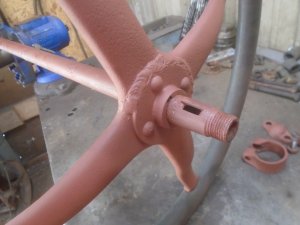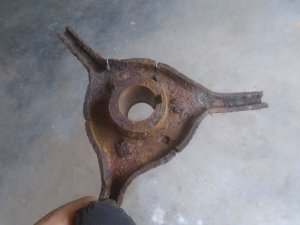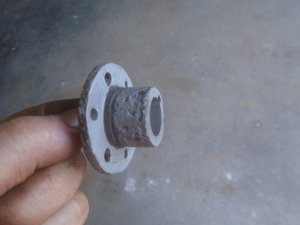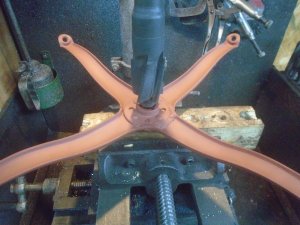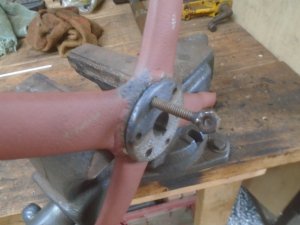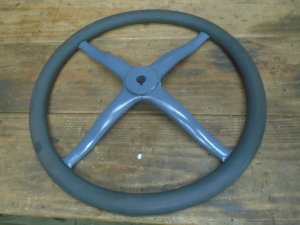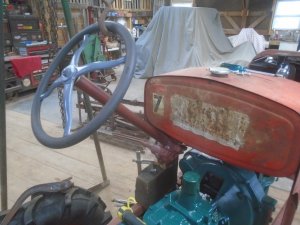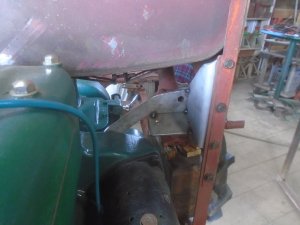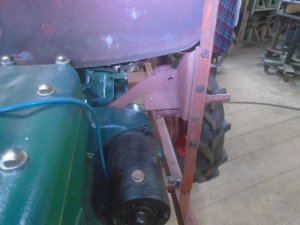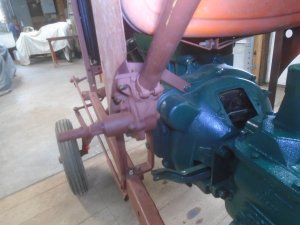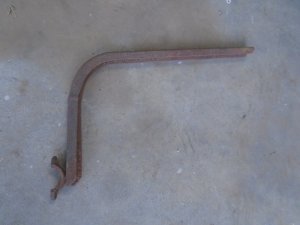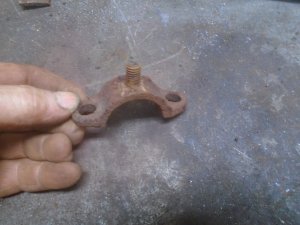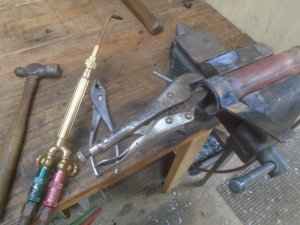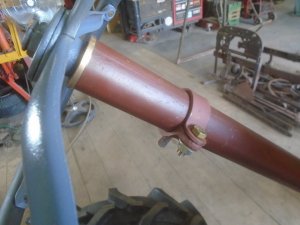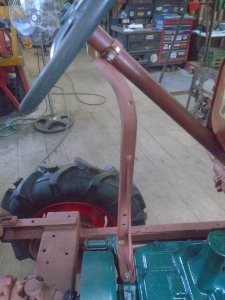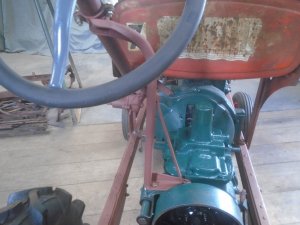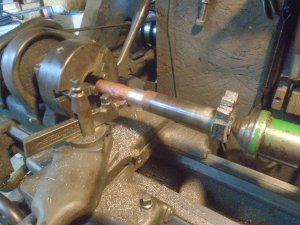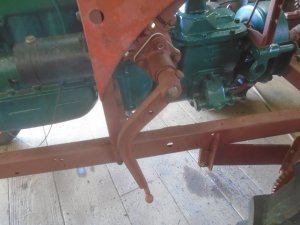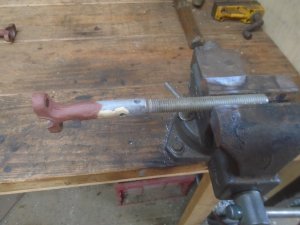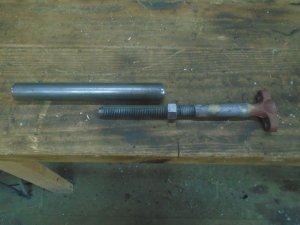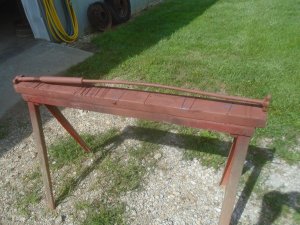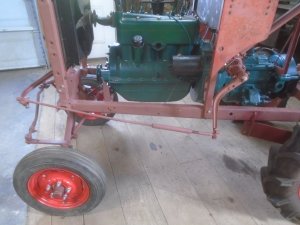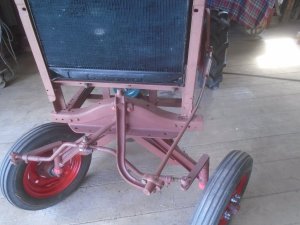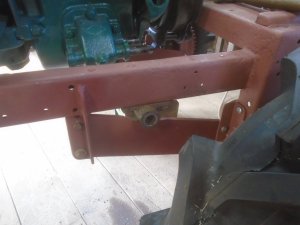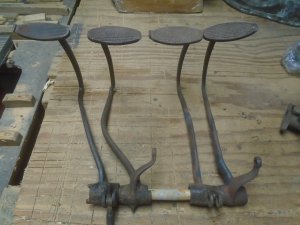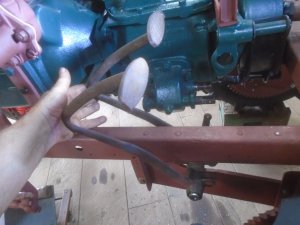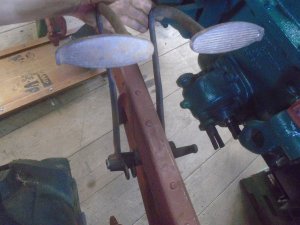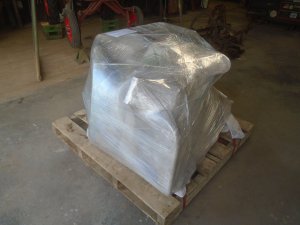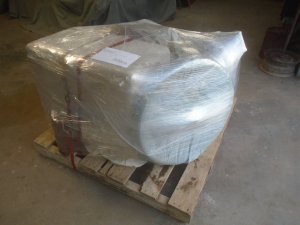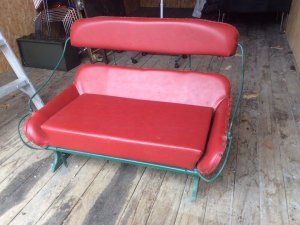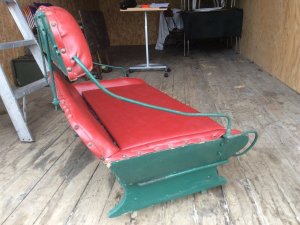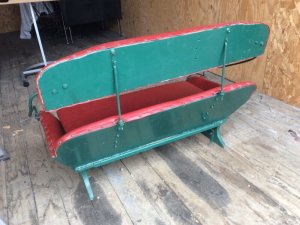Starting on the hood. First thing is to set a piece of wood in between the gas tank and the radiator to support the metal while I fitting it in place.
The wood will be removed once the hood is finished.
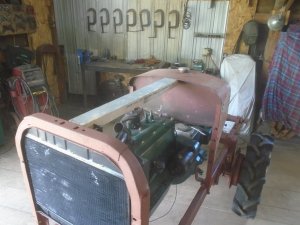
The back piece is bolted onto the tank.
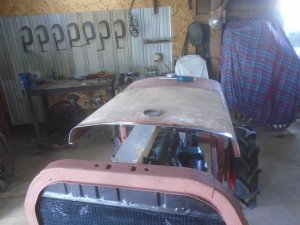
Unfortunately, I don't have a piece of sheet metal that is large enough to form the front part of the hood out of.
So I cut a 12 inch wide strip off the metal from the original hood. After sand blasting it, I found some spots that are rusted thru so that will have to be fixed.
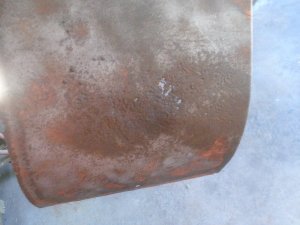
Forming the tight curve in the metal to match the curve on the back piece of the hood. ( a little glare from the sun shining in )
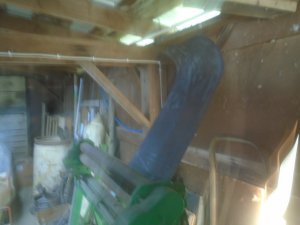
Checking the fit of the curve.
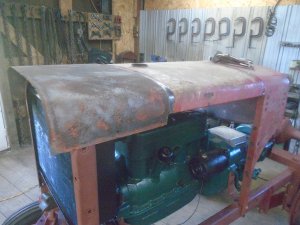
I'm using a set of step dies on the bead roller to form a stepped down lip along the back edge.
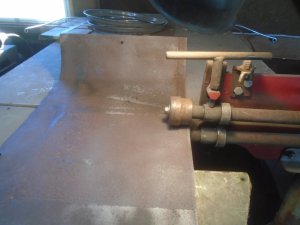
Here is the formed edge.
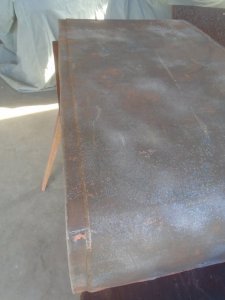
Then holes are punched into it for welding thru.
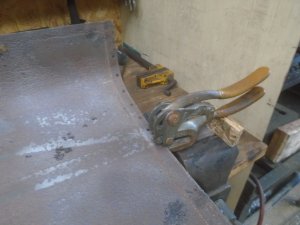
The stepped down lip fits underneath the the edge of the back part of the hood. This makes the surface of the two pieces flush to each other.
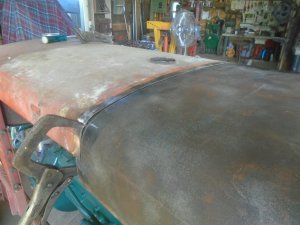
The front of the hood is formed around the larger curve of the radiator support. I'm thinking of forming a curved side panel at the front of the hood that would blend with the curve side panel on the gas tank.
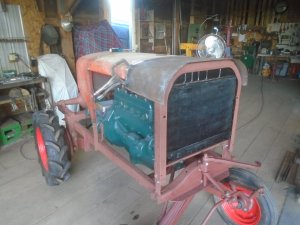
The wood will be removed once the hood is finished.

The back piece is bolted onto the tank.

Unfortunately, I don't have a piece of sheet metal that is large enough to form the front part of the hood out of.
So I cut a 12 inch wide strip off the metal from the original hood. After sand blasting it, I found some spots that are rusted thru so that will have to be fixed.

Forming the tight curve in the metal to match the curve on the back piece of the hood. ( a little glare from the sun shining in )

Checking the fit of the curve.

I'm using a set of step dies on the bead roller to form a stepped down lip along the back edge.

Here is the formed edge.

Then holes are punched into it for welding thru.

The stepped down lip fits underneath the the edge of the back part of the hood. This makes the surface of the two pieces flush to each other.

The front of the hood is formed around the larger curve of the radiator support. I'm thinking of forming a curved side panel at the front of the hood that would blend with the curve side panel on the gas tank.


